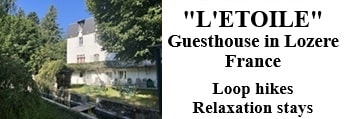70km bike tour at La Bastide-Puylaurent |
From l’etoile, head towards the centre of the village and follow the direction of Villefort opposite until the Pradillou roundabout. Turn right and follow the D906 for 800 m. Then take the old abandoned road on your left, for a distance of 5.7 km. Join the D906 and follow it for 8.8 km, passing through La Molette and Prevencheres. Just after the Rachas dam, turn left towards Albespeyres, taking the greenway for 6 km until La Garde-Guerin. Find the D906, which you will follow until Villefort. Cross the village and go up to the roundabout, then take the D51 for 22.1 km passing through Saint-Andre-de-Capceze, Vielvic, Le Martinet and Aujac. Turn right onto the D52 to the Col de Soulages, passing through Mouredes. Then follow the D17 on your left to Peyremale via L’Elziere and Mas Herm. At the roundabout, turn right onto the D29 towards Chamborigaud, passing through Chamboredon and Chambon. Finally, turn left onto the D906, then left again just before the viaduct to reach the station. Return by train (Train timetables).

20,5km - 25km - 27,7km - 30km - 35,2km - 37km - 41,5km - 44km - 48,4km - 57,5km - 59,4km - 60km - 60,5km - 69km - 70km - 76,8km - 77km - 81km - 90km - 95,7km
Google Maps - Google Earth - GPX
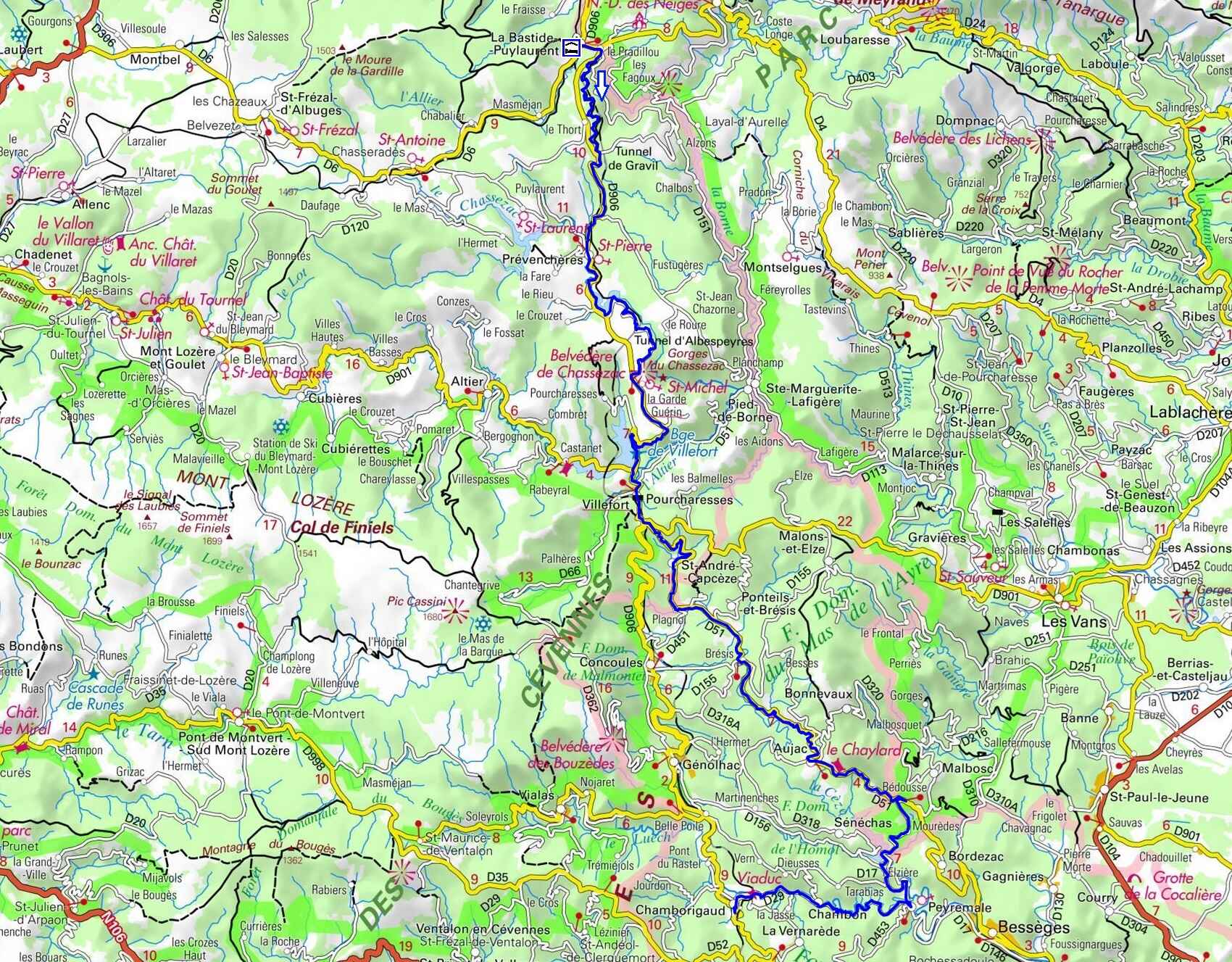


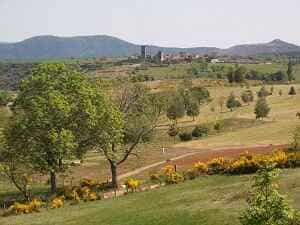
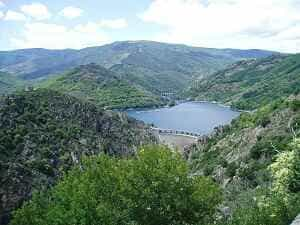
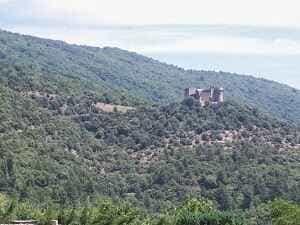
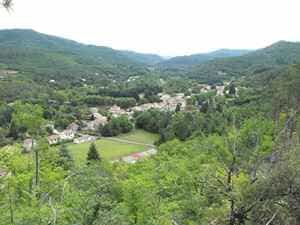

Distance: 69.8km. Maximum altitude: 1082m. Minimum altitude: 204m. Cumulative elevation gain: 783m.
IGN maps: La Bastide-Puylaurent (2738E). Mont Lozere Florac PN des Cevennes (2739OT). Largentiere la Bastide-Puylaurent Vivarais Cevenol (2838OT). Besseges Les Vans Chassezac Valley (2839OT).
Print the route - Electric bike rental
Aujac is a small village located in the Gard department in southern France. The village has a long history dating back to Roman times, when the region was an important agricultural and wine-producing area. Over the following centuries, Aujac experienced a series of invasions and conflicts, including the Wars of Religion between the Catholics and Protestants in the 16th century. The village was also affected by the French Revolutionary Wars and the regional conflicts that followed. In the 19th century, Aujac experienced an economic revival thanks to the silkworm industry, which flourished in the region. The village also saw the arrival of the Ales-Besseges railway line in 1904, which facilitated the transport of goods and passengers to the region.
The village is also known for its well-preserved medieval architecture, including the 12th-century Romanesque church and the ruins of the 11th-century fortified castle. The construction of the Château du Cheylard began in the 12th century. It is made of light yellow sandstone from a local quarry. It consists of a nave, two semi-circular vaulted bays, a barrel-vaulted choir bay, a vaulted apse and a portal. It was remodeled in 1480. A gable wall, a comb bell tower and side chapels were added. On the outside, the capitals represent a man with a large head and legs folded on a lion. Built between the 11th and 12th centuries on a rocky spur, the Château d'Aujac dominates part of the upper Ceze valley in the Cevennes. The annex village is made up of buildings for peasant and seigneurial use.
Chamborigaud is a French commune located in the Cevennes, in the Gard department in the Occitanie region. The town is known for its historical heritage, including its railway viaduct, which is a remarkable monument of 19th century metal architecture, as well as its 12th century Romanesque church. The town is also a starting point for outdoor activities in the Cevennes, with marked hiking trails and remarkable natural landscapes. Chamborigaud is located on the Cevennes railway line, which offers panoramic views of the region. The town is home to several historical monuments, including the Saint-Pierre church, the Chamborigaud viaduct and the Château de la Jasse. The Chamborigaud viaduct is a remarkable work of art, built in the 19th century. It is listed as a historical monument. The Saint-Pierre church is a 12th century Romanesque church. It is listed as a historical monument. The Château de la Jasse is a 16th century castle. It is located in the hamlet of La Jasse, 4 km from Chamborigaud. The Cevennes National Park is a French national park, located in the south-east of the Massif Central. It is home to a wide variety of landscapes, fauna and flora.
Mentioned in 1345 in the "cartulary of the seigneury of Alais". The inhabitants of the village distinguished themselves during the Camisard War among the Florentines, who committed atrocities in the name of religion. Homeland of the writer Jean-Pierre Chabrol, bard of the Cevennes. Economic and demographic recession since the closure of the coal mines. The origins of Chamborigaud date back to Antiquity. The commune is located on the old Roman road linking Nîmes to Montpellier. In the Middle Ages, Chamborigaud was an important village, located on the GR700 Voie Regordane. The commune was partly destroyed during the Hundred Years' War. It was rebuilt in the 16th century. In the 19th century, Chamborigaud experienced significant economic growth, thanks to the construction of the viaduct and the opening of the Paris-Clermont-Ferrand railway line.
